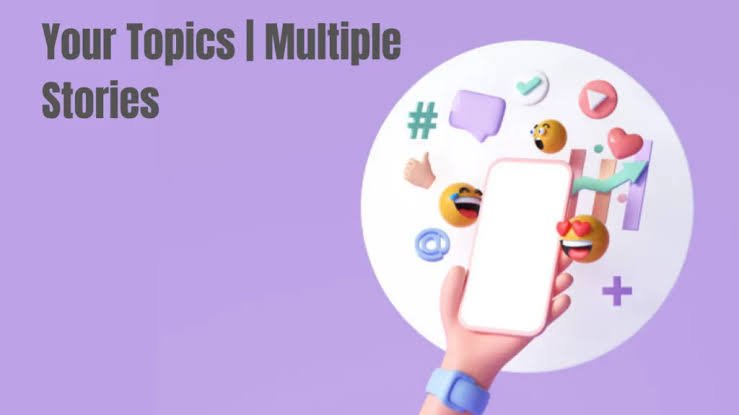Storytelling is an essential part of human expression. Whether you’re crafting a blog, writing a novel, or even developing content for social media, combining your topics | multiple stories can create a compelling narrative that resonates with your audience. This article explores how to effectively weave multiple stories into a cohesive whole, providing a unique and engaging experience for readers.
Understanding the Power of Multiple Stories
When we talk about your topics | multiple stories, we are referring to the ability to create several interconnected narratives that bring different ideas, perspectives, or themes into one cohesive framework. A successful blend of these elements can keep readers interested while exploring various aspects of a broader subject.
The art of telling multiple stories within a single context allows for creativity. It encourages both the writer and the reader to explore a wide range of emotions, settings, and characters. This is especially useful for blog posts, articles, and even novels, where readers expect not just one storyline but a diversity of experiences.
Why Multiple Stories Matter in Content Creation
In the world of content creation, engaging readers is the ultimate goal. The use of multiple stories is one way to do this effectively. Here’s why it works:
- Diversity of Content: By incorporating various topics, you appeal to a wider audience, ensuring there’s something for everyone.
- Increased Engagement: Each story brings a different angle, which keeps your audience hooked from one paragraph to the next.
- Thematic Depth: Multiple stories allow you to explore different themes and ideas that might be overlooked in a single-story format. This is especially important when dealing with complex topics.
How to Incorporate Multiple Stories in Your Content
Successfully weaving multiple stories into your content requires careful planning and structure. Below are some key steps to follow:
1. Identify Your Core Themes
Start by defining the main topics you want to cover. Whether it’s a blog post about personal development or a more technical subject like software development, knowing the main themes helps you create a framework for your multiple stories.
2. Connect the Stories Through Common Threads
Each story should link back to the main theme. For example, if you’re writing about “motivation,” one story could be about someone’s personal journey, while another could delve into the psychology of motivation. By threading these together, you maintain a sense of coherence.
3. Use Transitions Effectively
Transition words are crucial when weaving together multiple stories. Without them, your content may feel disjointed. Words like however, moreover, and in addition will help guide readers from one story to the next smoothly.
4. Maintain a Consistent Tone
A unified tone throughout the narrative keeps things from feeling fragmented. Whether you’re writing in a casual or formal voice, ensure consistency across all the stories.
5. End With a Strong Conclusion
Your final thoughts should tie all the stories together. A well-crafted conclusion that reflects on the journey of the multiple narratives helps bring everything full circle.
Examples of How to Use Multiple Stories Effectively
Let’s look at a few examples of how this can work in various types of content:
- Blog Post: A post about “Overcoming Obstacles” could have several short stories from different people: a story about business struggles, a personal anecdote about overcoming self-doubt, and an example from history.
- Social Media Campaign: You might create a series of posts about “Inspiration.” Each post tells a different story but revolves around the same theme, like inspiring quotes, personal achievements, or historical events.
- Fiction Writing: A novel might switch between characters, each with their own storyline, but all leading to a shared conclusion or theme. This approach offers a rich and immersive experience.
Challenges in Using Multiple Stories
While incorporating your topics | multiple stories can be highly effective, it isn’t without its challenges. Writers may struggle with maintaining coherence across the different stories or balancing the pacing. Too many distractions could lead to a diluted narrative. Hence, focusing on the common thread is vital.
Balancing Story Length
Not every story should be the same length. Some will be more detailed, while others will serve as brief interludes. Balancing story length is essential to keep readers interested without overwhelming them.
Avoiding Repetition
If the stories overlap too much in their content or themes, readers may lose interest. To combat this, make sure each story introduces a fresh perspective or new information.
Conclusion: The Power of Multiple Stories
In conclusion, your topics | multiple stories can elevate your content to new heights. By blending various narratives and themes, you provide depth, diversity, and engagement for your audience. The key lies in crafting a story that ties everything together while ensuring each element remains relevant and compelling. Whether you’re a writer, blogger, or marketer, mastering this technique will help you create richer, more dynamic content.
Frequently Asked Questions (FAQs)
Q1: How do I make sure my multiple stories stay cohesive?
Ensure each story ties back to the central theme, and use transitions to guide the reader from one narrative to the next.
Q2: Can I mix different genres of stories in one piece?
Yes, as long as the overall tone and theme remain consistent, mixing genres can add variety and interest.
Q3: How can I use transitions effectively?
Use transition words like moreover, however, and on the other hand to move the reader from one story to the next smoothly.
Q4: How long should each story be?
It depends on the context, but try to vary the length of each story to maintain pacing while ensuring each contributes meaningfully to the overall narrative.
Q5: Can multiple stories help improve SEO?
Yes, by incorporating different perspectives and keywords, you can create richer content that engages readers and improves your SEO ranking.












Leave a Reply